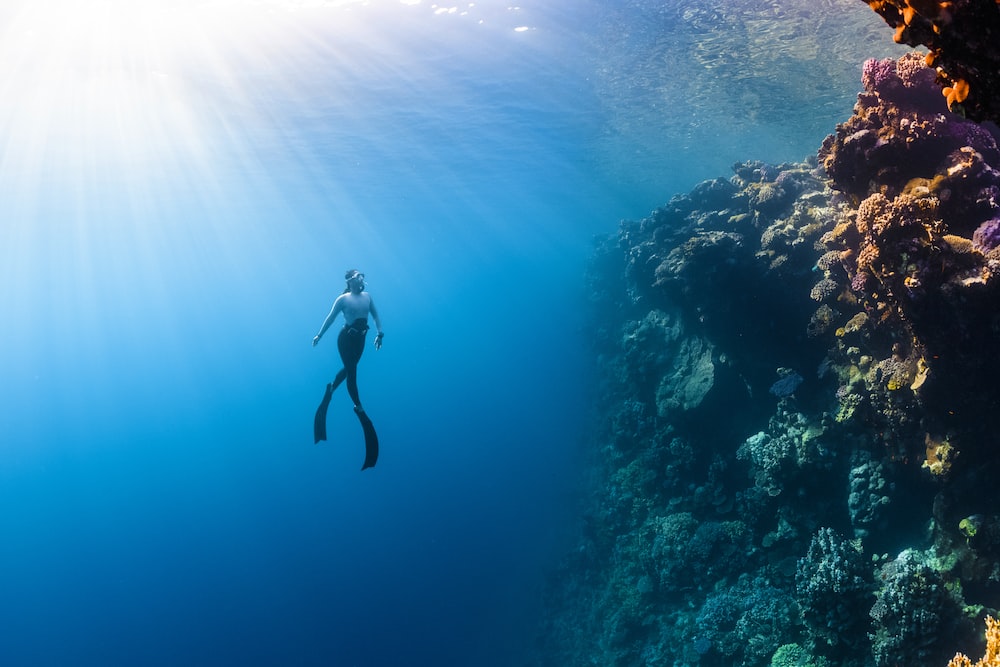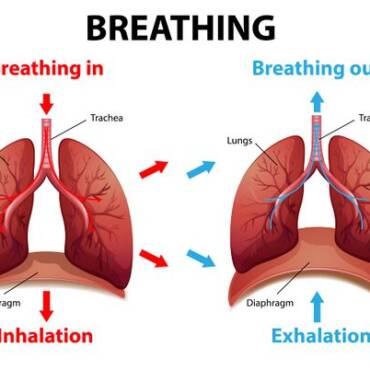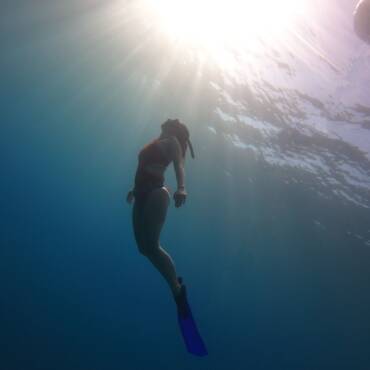When most people first start finning, they make the error of having a strong backward stroke and an almost non-existent forward stroke.
While this is understandable given that it is easier to move the fins backward, it also means that the freediver will not descend vertically, but will instead dive into and/or past the dive line as the backward stroke pushes their body forward.
The Correct Finning Technique:
Keep your legs straight at the hip when finning.
When your leg remains straight during the kick cycle, it enables the fin to flex at an angle that directs water backward – the direction we want it to go.
However, introducing too much bend in your knee (a slight, gentle bend is acceptable) disrupts this optimal flow.
The result? Divers might find themselves either bicycle kicking or needing to ‘spoon’ water back on the forward kick.
Regardless, the water still tries to escape at the tip of the blade. Yet, with the knee bent, it not only moves backward but veers off at a 45-degree angle, following the contour of the bent leg.
This isn’t a backward flow; it’s more like going sideways. Such improper technique often forces divers into an arched posture, potentially pushing them off their desired dive line and increasing the overall effort required for the dive.
Furthermore, this bent-leg approach yields minimal forward propulsion during the return kick, ultimately diminishing the diver’s efficiency by approximately 25%.
Medium amplitude and a steady relaxed speed
The most common mistake is executing a rapid kick with minimal amplitude. In this scenario, the fin blade tends to create ripples along its length instead of flexing to efficiently propel water backward.
A kick like this consumes a significant amount of energy while yielding minimal results. It’s important to note that the speed and amplitude of your kick are directly influenced by the size of your fin.
For instance, smaller fins, such as those used by bodyboarders, work best with a fast kick. Snorkeling fins, on the other hand, strike a balance between amplitude and speed, making them versatile for various purposes. Freediving fins, typically measuring over 1 meter in length, require a slow, deliberate kick.
As a fundamental guideline, maintain your fin’s amplitude at approximately shoulder-width apart in the vertical plane, and maintain a steady kick speed, hovering between 60 and 70 beats per minute (bpm).
The type of fin
Ok, now that we’ve got the technique sorted out, let’s look briefly at the type of fin.
The greater the fin stiffness, the less it will flex and the harder it will be to move in the water.
Choose the fin according to your musculature, physical ability and the type of diving you intend to do.
If you are big and looking to dive deep, a stiffer fin might be more suitable.
On the other hand, if you are slighter and plan on shallow diving or surface swimming, softer fins will be more appropriate.
This is because most of your energy will already have been spent to hold your position at the surface before you’ve had a chance to descend.
“If you’re using your fins in the pool, keep in mind that you won’t have to overcome positive or negative buoyancy, so pick a fin strength that allows you to fin a long distance and works well on the surface when buddying.”
Go here to read our post on freediving fins.
References: https://www.freediveuk.com/correct-finning-technique-for-freediving/





1 Comment
Add Comment